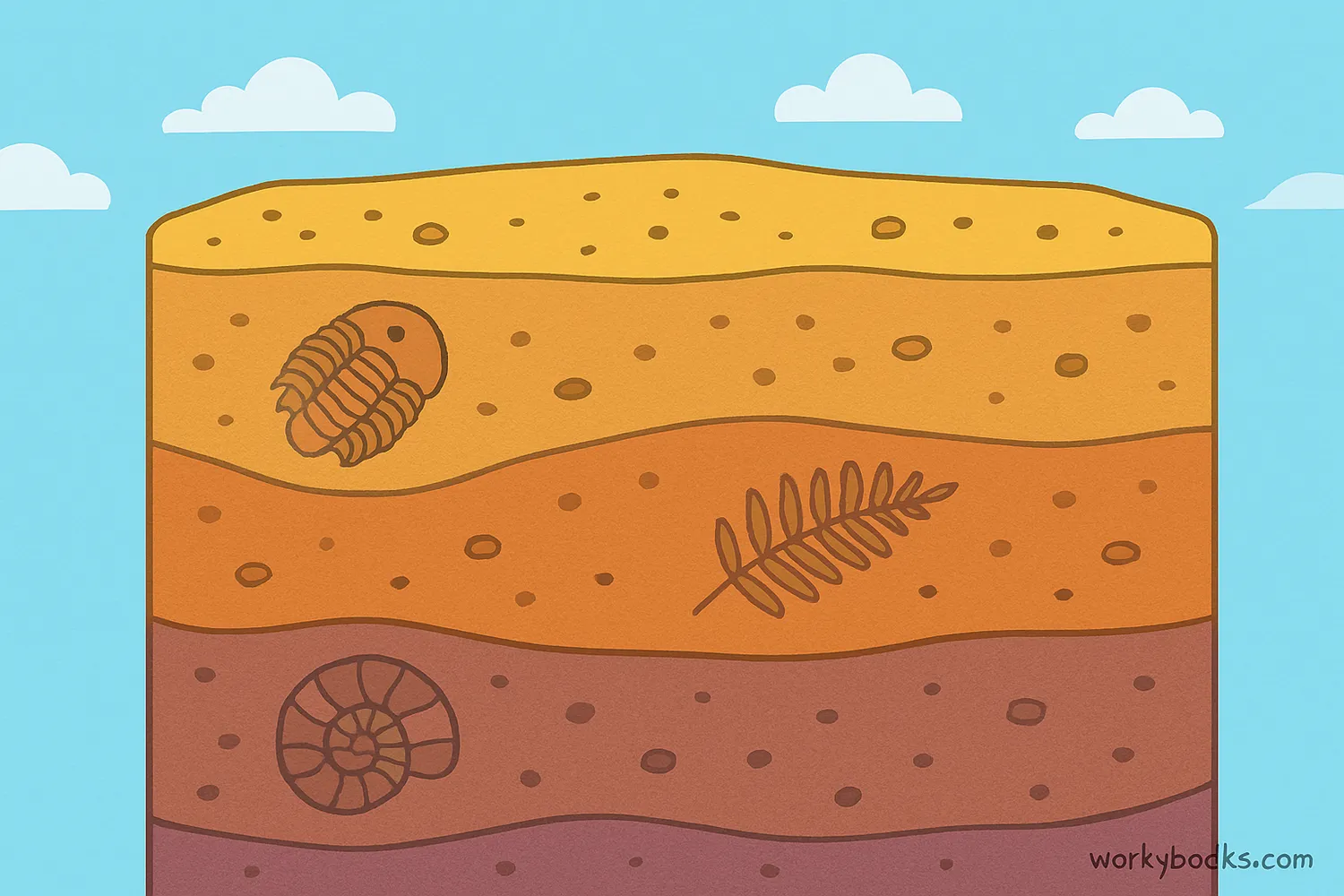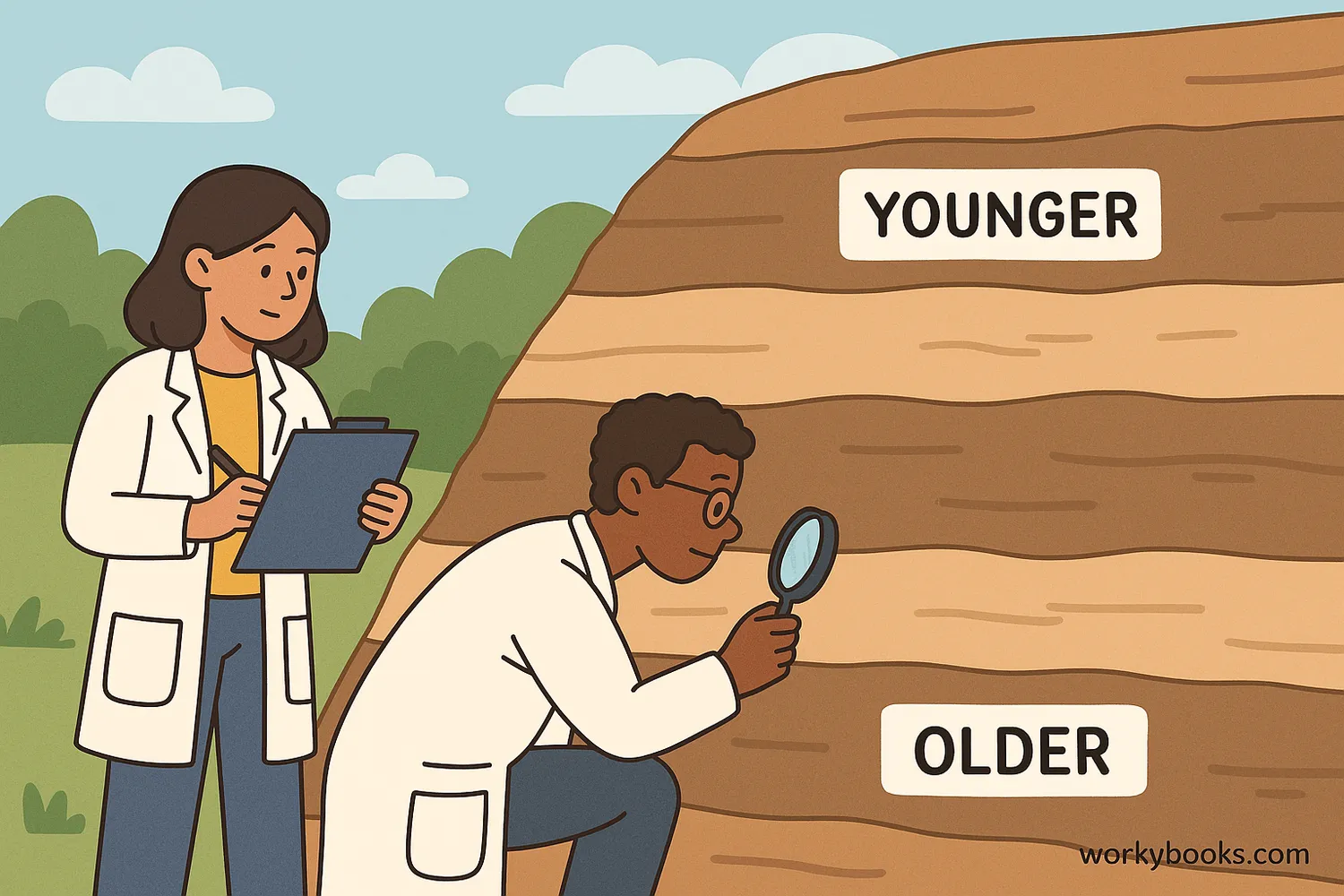Stratigraphy - Definition, Examples, Quiz, FAQ, Trivia
Discover how scientists study rock layers to understand Earth's history!
What is Stratigraphy?

Stratigraphy is the study of rock layers and layering. It's like reading a history book of the Earth! Scientists called stratigraphers examine these layers to understand how our planet has changed over millions of years.
Think of Earth's crust as a giant layer cake! Each layer tells a story about what was happening when that layer formed. Some layers might have fossils of ancient creatures, while others might contain evidence of volcanic eruptions or even meteor impacts.
Geology Fact!
The Grand Canyon displays some of the most spectacular rock layers in the world, with some rocks dating back nearly 2 billion years!
Principles of Stratigraphy
Stratigraphy follows several important principles that help scientists understand the order of events in Earth's history:
Law of Superposition
In undisturbed rock layers, the oldest layers are at the bottom and the youngest are at the top
Principle of Original Horizontality
Rock layers are originally deposited horizontally
Principle of Lateral Continuity
Layers extend in all directions until they thin out or reach a barrier
Principle of Cross-Cutting Relationships
Any feature that cuts across rock layers is younger than the layers it cuts through
Principle of Faunal Succession
Fossil organisms succeed one another in a definite order
These principles help geologists piece together Earth's history like detectives solving a mystery. By carefully observing how rock layers relate to each other, scientists can determine the sequence of events that shaped our planet.
Relative Dating

Relative dating is a method used to determine the age of rocks and fossils compared to other rocks and fossils. It doesn't tell us exactly how old something is, but it helps us understand what came before what.
Think of it like knowing that your grandparents are older than your parents, who are older than you, without knowing anyone's exact age. Stratigraphers use the principles of stratigraphy to figure out the order of events in Earth's history.
Example of Relative Dating
If you find a fossil in a rock layer that is below another layer containing dinosaur fossils, you know your fossil is older than the dinosaur fossils, even if you don't know exactly how old it is.
Stratigraphic Column
A stratigraphic column is a visual representation of rock layers in a specific location. It's like a vertical slice of Earth's history that shows the sequence of rock layers from bottom (oldest) to top (youngest).
Geologists create these columns by carefully measuring and describing rock layers in outcrops, cliffs, or drill cores. Each layer is drawn to scale and labeled with information about the rock type, thickness, and any fossils found.
Measure Thickness
Scientists carefully measure how thick each layer is
Describe Rocks
They note the color, texture, and composition of each layer
Record Fossils
Any fossils found in the layers are carefully documented
Types of Stratigraphy
There are several specialized types of stratigraphy that focus on different aspects of rock layers:
Lithostratigraphy
Studies rock layers based on their physical characteristics like color, texture, and composition
Biostratigraphy
Uses fossils to date and correlate rock layers across different locations
Chronostratigraphy
Focuses on the age of rock layers and the organization of geologic time
Sequence Stratigraphy
Studies sedimentary layers in terms of sea level changes and sediment supply
Each type of stratigraphy gives scientists different information about Earth's history. By combining evidence from all these approaches, geologists can build a more complete picture of how our planet has changed over time.
Stratigraphy Knowledge Check
Test your understanding of stratigraphy with this quiz. Answer all 5 questions to see how much you've learned.
Frequently Asked Questions
Here are answers to some common questions about stratigraphy:
Did You Know?
Discover some fascinating facts about stratigraphy and Earth's history:
Vast Time Scales
The oldest known rocks on Earth are about 4 billion years old! If all of Earth's history were compressed into one year, humans would appear in the last few minutes of December 31st.
Grand Canyon Layers
The Grand Canyon displays over 40 major rock layers that represent nearly 2 billion years of Earth's history. The oldest rocks at the bottom are metamorphic and igneous, while the upper layers are sedimentary.
Asteroid Impact Evidence
Scientists found a thin layer of clay rich in iridium (a rare element on Earth but common in asteroids) all around the world. This helped confirm the theory that an asteroid impact caused the extinction of dinosaurs 66 million years ago.
Oil and Gas Discovery
Stratigraphy is crucial for finding oil and natural gas. These resources are often trapped between impermeable rock layers, and understanding the sequence of layers helps geologists know where to drill.





